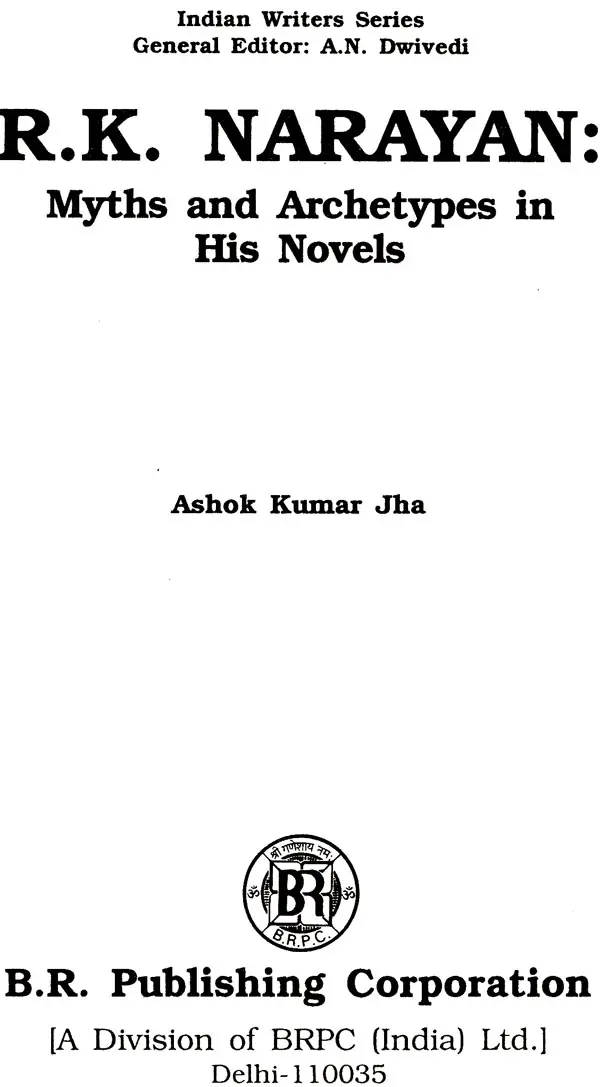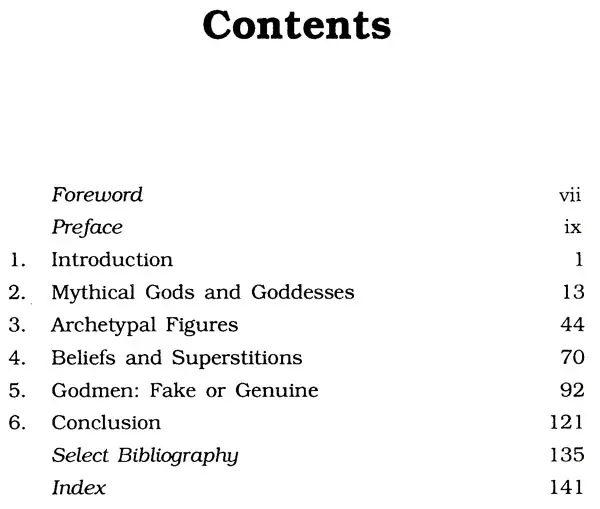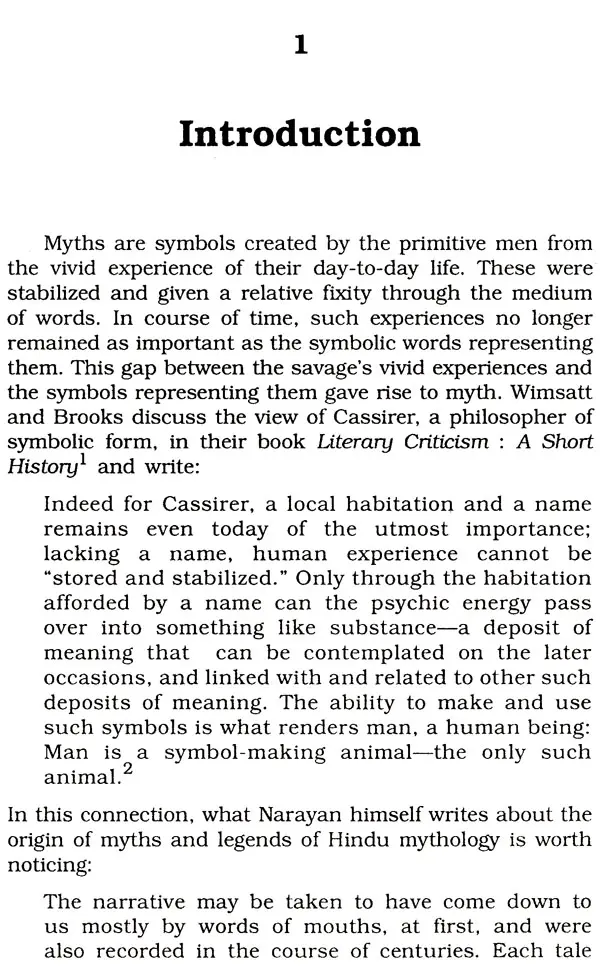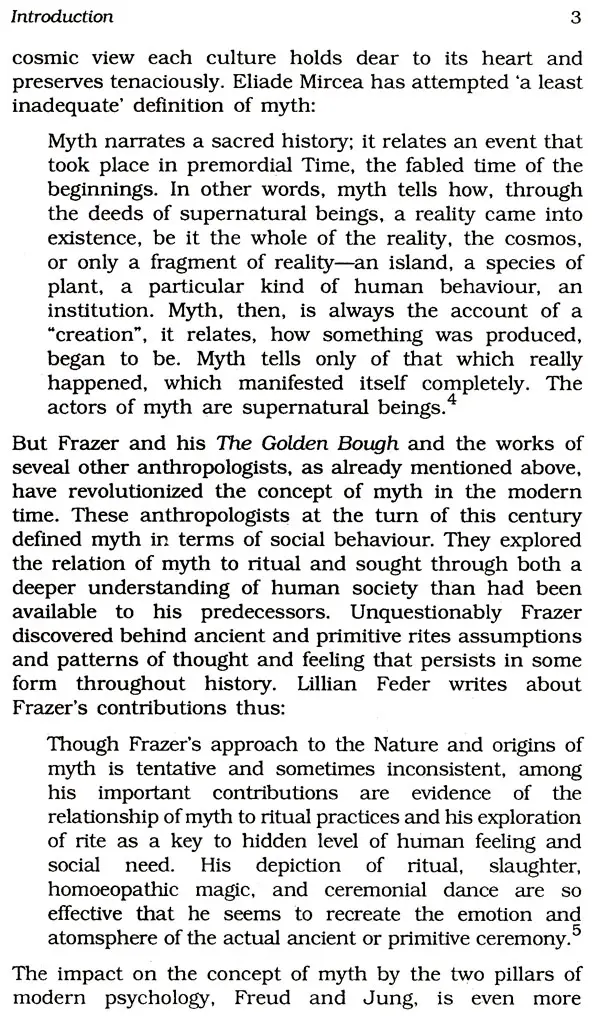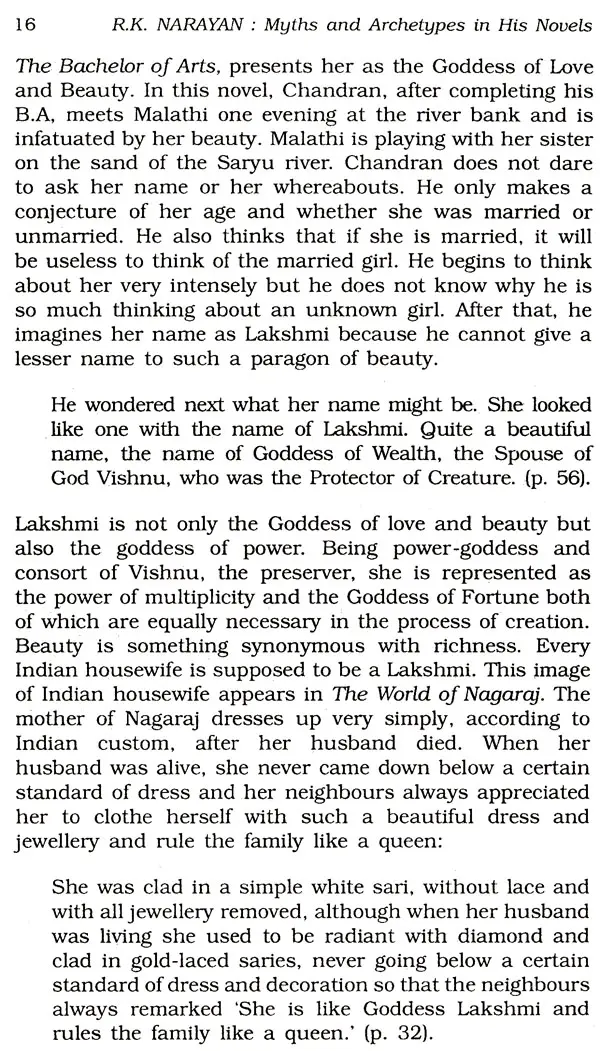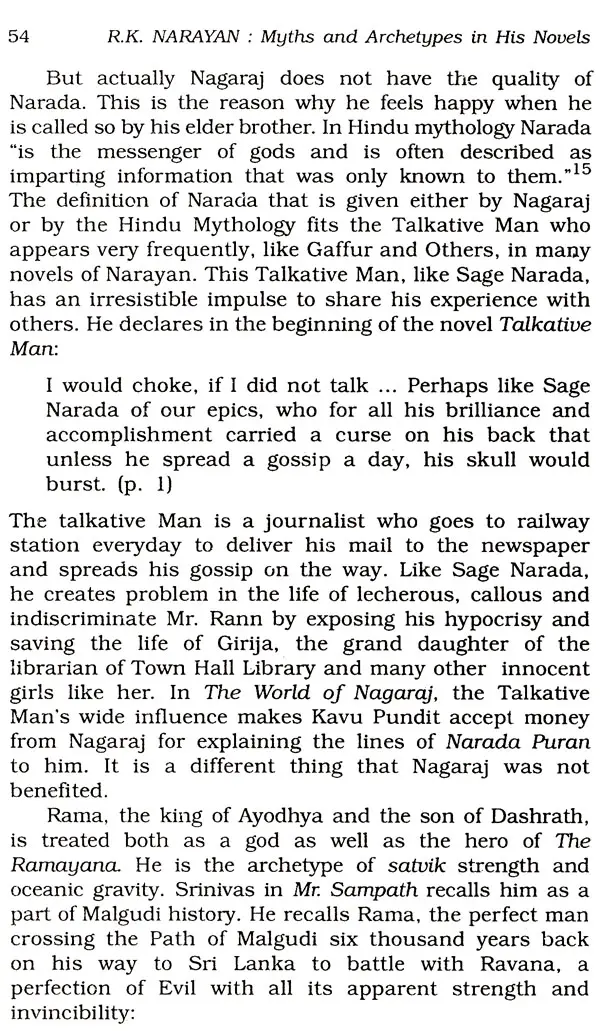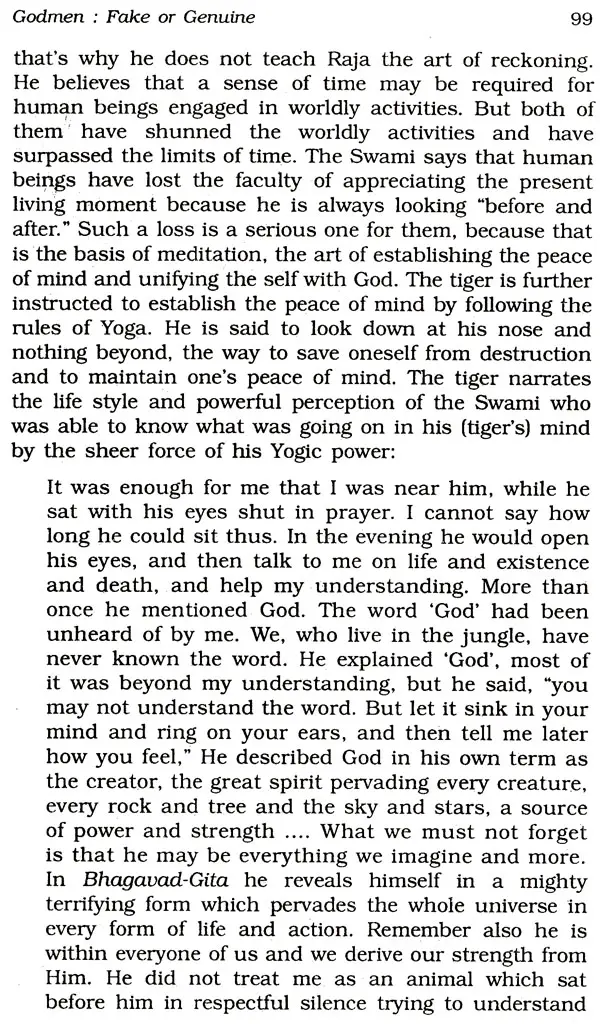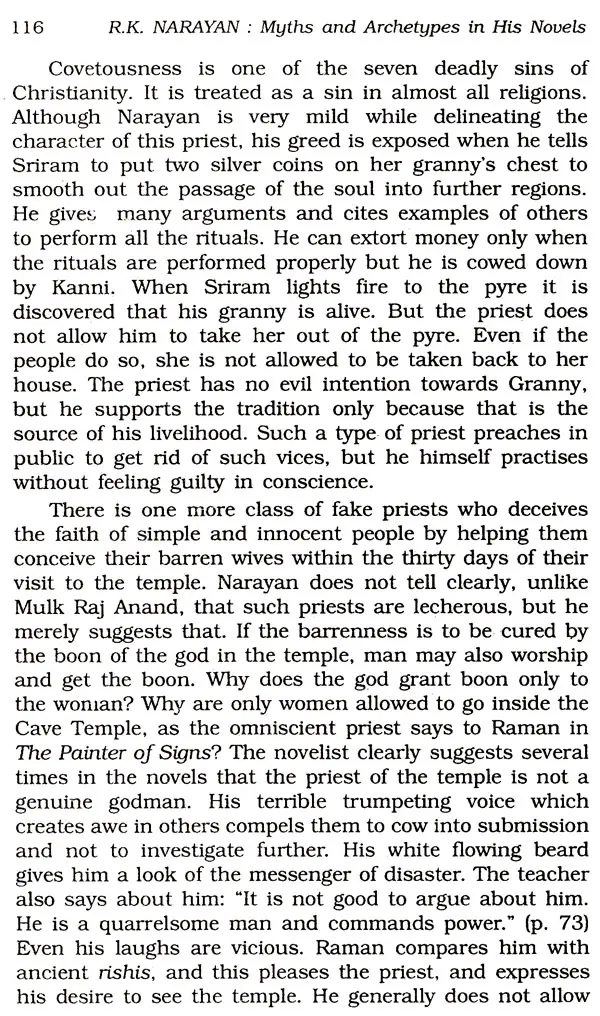
R.K. Narayan: Myths And Archetypes in His Novels
Book Specification
| Item Code: | UAT054 |
| Author: | Ashok Kumar Jha |
| Publisher: | B.R. Publishing Corporation |
| Language: | English |
| Edition: | 2000 |
| ISBN: | 8176461385 |
| Pages: | 144 |
| Cover: | HARDCOVER |
| Other Details | 8.50 X 6.50 inch |
| Weight | 270 gm |
Book Description
R.K. Narayan (born 10th October, 1906) happens to be one of the top three writers of contemporary Indian English fiction. He is well-known for his sparkling wit and humour, his keenly observant eye, his pure and unflowery language, his unmistakable locale, and his persistent use of Indian myths and legends, and these add a peculiar touch to his novels. Some scholars might consider Narayan's The Financial Expert as his masterpiece, because it is so close to life-situations as represented by the rise and fall of Margayya, the financial wizard. But I, for one, attach great significance to his Sahitya Akademi award-winning novel, The Guide (1958), where Narayan's comic mode of perception reaches its acme and where his story remains so attractive unto the very end. Even his art of characterization is marvellously handled; Rosie, Marco and Raju are all boldly drawn. This critical study by Dr. Ashok Kumar Jha is an attempt to explore the novels of R.K. Narayan in the light of his application of the Hindu myths and archetypes in them. These mythical figures-popular Indian gods and goddesses tend to create an atmosphere beyond time and space and enable the novelist to connect the past with the present. In this way, they contribute a good deal to the creation of a living tradition, to the establishment of a healthy culture, and to the evolution of an unbroken civilization. Beliefs and superstitions are an integral part of the mythical formulations. Sometimes myths and archetypes are evoked to preserve and uphold human values, which transcend the barriers of clime or clan.That's why Narayan's novels are of universal appeal, touching the inner chords of the entire mankind. What is most appealing in him is that he does not parade his knowledge of the Indian epics and puranas. He keeps himself free from the metaphysical leanings of Raja Rao and the leftist (ever propagandist) propensities of Mulk Raj Anand. The myths and archetypes (those personages who have become our ideals or prototypes for one or the other virtue-though they are not precisely gods and goddesses) used by Narayan come as naturally and effortlessly to him as leaves to a tree. Dr. A.K. Jha has extensively dealt with the Hindu myths and archetypes to be found in R.K. Narayan's fiction. He has assiduously searched and researched the subject of his study for years together. I am sure, readers and scholars will find 'food' (in the Words worthian sense) here to feed and sustain themselves in their intellectual pursuit.
That English, like other Indian languages, has acquired the place of intellectual and emotional make-up in the life of an average Indian is now an acknowledged fact. Its increasing popularity is evidenced by the bulk of qualitative publications every year by Indians in the field of creative writings, which has got due recognition in the country and the world at large. With its own special feature, it is now recognised as 'Indian English' which undoubtedly indicates the life and vitality the language has acquired at the hands of Indians. Though the process of connecting it with life was initiated even before R.K. Narayan and his other two great contemporaries, Mulk Raj Anand and Raja Rao, they proved a milestone in this process. R.K. Narayan's writings acquire shape without any outside force and at the same time he is within the reach of all types of readers. His age-old Indian approach to life, giving more importance to unseen forces than human endeavour, his unique sense of humour and his keen observant eye giving rise to his ironic vision, give his works a permanence of appeal, crossing the boundary of time and space. As an Indian, who believes in rich cultural heritage of India, he disallows tragic vision in his writings. His way of handling language and expressing Indian sensibility through English is as effortless as the flow of water falling from the snow-capped mountain. The present work is a humble attempt to study myths and archetypes in the novels of Narayan. One of the functions of myths is to explain the fundamental laws of Nature which confirm their validity beyond time and space. This function of myth is performed by mythical gods and goddesses and archetypal figures especially in Indian contexts. Mythical gods and goddesses and archetypal figures also perform another function of myth-to connect the past with the present and hence to preserve the unbroken flow of tradition, dear to all civilizations. These two functions of myths also include beliefs and superstitions as beliefs have been able to sustain mankind from time immemorial and when they lose their sustaining values, they become superstitions. Likewise godmen, in Indian society, are directly involved in preserving human values reflected through myths. In fact, the function of myth in literature is to preserve human values especially in the Indian context. This is the reason why literary artists and godmen were not separate beings in the ancient and medieval India. Narayan has given in his novels a complete picture of most of the popular gods and goddesses of India in their popular form. The frequency of their occurrence in his novels is also according to their popularity in Indian society. Besides, we come across some such mythical models in which not only Indians but the whole humanity has been cast for centuries, thus, preserving certain cherished human values. While dealing with the beliefs and superstition, Narayan follows the great tradition of India, but his rational mind prevents him from accepting something which has obviously lost its sustenance. In this connection, one should not forget that his main purpose is to phrase Indian culture through the medium of English. Hence, what may appear unjustified to the modern mind may be justified for those who believe in the great cultural heritage of India. Narayan's approach to godmen is that of an Indian, their positive role in society. This work was accepted by L.N. Mithila University, Darbhanga (Bihar) for the award of the Ph.D. degree in 1996. I do not have words to express my gratitude to Prof. Amar Nath Jha, Professor and Head, Department of English, L.N. Mithila University, Darbhanga, for his able and inspiring guidance, and to my beloved teacher Prof. S. Palit for his valuable suggestions and constant inspiration. Whenever I approached them they spared their time and discussed my problem without any reservation. I also owe my gratitude to Prof. Pashupati Jha of the University of Roorkee for his valuable suggestions and encouragement. I am immensely grateful to Prof. A.N. Dwivedi, Professor of English, Allahabad University, who has been kind enough to go through the manuscript before its publication and to write a Foreword. I owe a lot to my father-in-law, Prof. Rajendra Jha, Rtd. Professor of Sociology, who initiated me to take up this work and has constantly been inspiring me to remain academically active. My thanks are also due to Shri Praveen Mittal who has agreed to publish this book. Finally, I owe my gratitude to He, who, remaining silent, gives right direction to all our thoughts and actions. I am indebted to National Library, Calcutta, Central Library, L.N. Mithila University, and J.N. College Library, Pasighat (Arunachal Pradesh) for many books and materials which I required in course of writing this book. I am grateful to all those whose names have not been mentioned here but directly or indirectly helped me in bringing out this book in the present form.
**Contents and Sample Pages**
